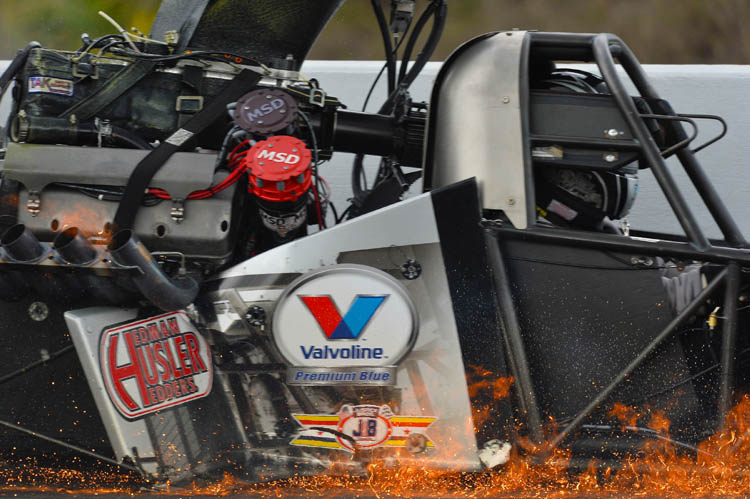larry was on 'fox and friends' around 5:50am cst today.....talked about it for about 5 minutes.
Any links?
larry was on 'fox and friends' around 5:50am cst today.....talked about it for about 5 minutes.
If the cars didnt have such a long wheelbase would it keep them from taking off like that or is it because the wing is so far back?
How about we let the experts investigate and see what they say. I'm sure there are a bunch of smart guys figuring out what happened right now. Let's all be rationale and wait and see what they say happened.
While I'm no expert in chassis design, I do have a 40 year mechanical engineering background in a machine shop. With the chassis arching up in the middle as they do, cantilever beam deflection comes to my mind. With the front wing anchoring the front end down, and the rear wing positioned behind the rear axle centerline, along with tire traction wanting to pick up the front end, it's going to arch in the middle possibly inducing metal fatigue. I'm surprised that this issue hasn't been addressed sooner by Glendora. Perhaps that why big budget teams replace pipe every year. Let's just hope it never happens again.
yes we did have several of these failures back in 99-2000 , and what was happening then? 330mph. Spencer ran 329 at Gainesville. I do not want the track shortened, I want these motors backed down. Shortening the track was supposed to be temporary and for good reason, because it would only work until the tuners caught up and had the cars going just as fast at 1000' as they did at 1320'.
My fear is that 1/8 mi will be the next 'solution' the bonehead bean counters who really don't care about drag racing come up with.
Great posts, Bob. I agree. I've honestly been fine with 1000', especially since my most favorite classes still run it, but the tuners have caught up, and if they've caught up, who's to say they can't exceed what they were already running?There is no reason for this crap. 1/4, 300mph tops. It can be done, and the racing would be awesome. There's no reason to run these cars on the ragged edge. There are no more barriers to break. 300 was it. 350 can never happen. It's not safe. You know there are grandstands fairly close to the track on the spectator side there in gainesville. You want a part in the stands to kill someone? That already happened in Phoenix, but nothing changes. The law of diminishing returns - the quest for more performance in the nitro categories has been bumping into that law over and over again for years. Enough already.
Let's face facts. NHRA tech dept. Is not the NTSB. After what was left of chassis in front of the footbox ground against the wall, it could be difficult to find the point of failure. A lot of dynamics are going in here - in spite of slip joints, there is a lot of compression on bottom rails. And . . . If it is found, what does NHRA do? Increase wall thickness, add more bracing and/or eliminate slip joints . . . I sure don't know!
I looked at all those images again and I don't see any slip joints. You sure the Hadman chassis use slipjoints?
Also, looking at the dlagonals alongside the driver. The bottoms of them don't look like they were fishmouthed then weldeded. They were just butt weleded at the bottom. That might tend to make the welds at the bottom of the diagonals weaker than the ones at the top.
Oh, yeah, I forgot to say this before, that Mark Rebilas is an awesome shooter...sheesh.
That or he don't get out too much.Is that kid stoned?

